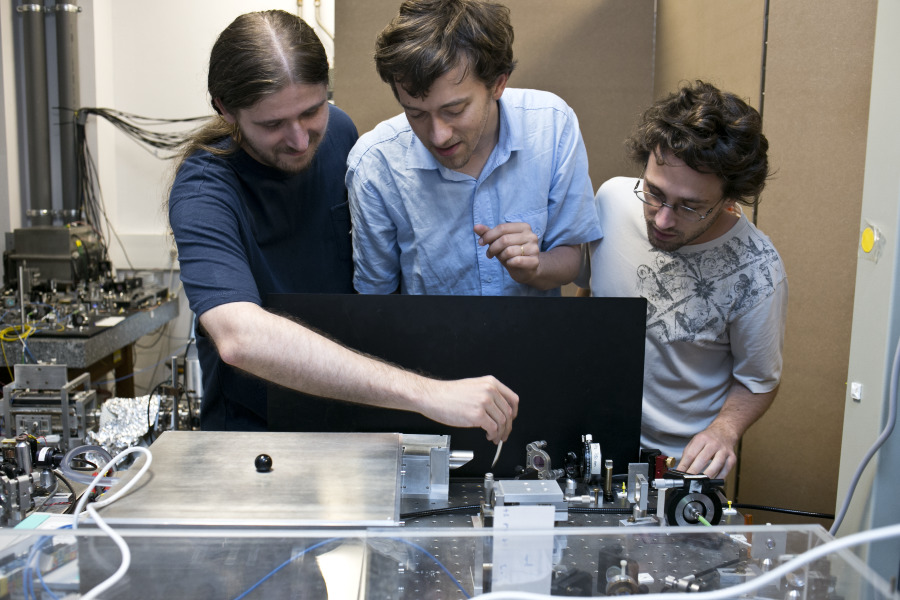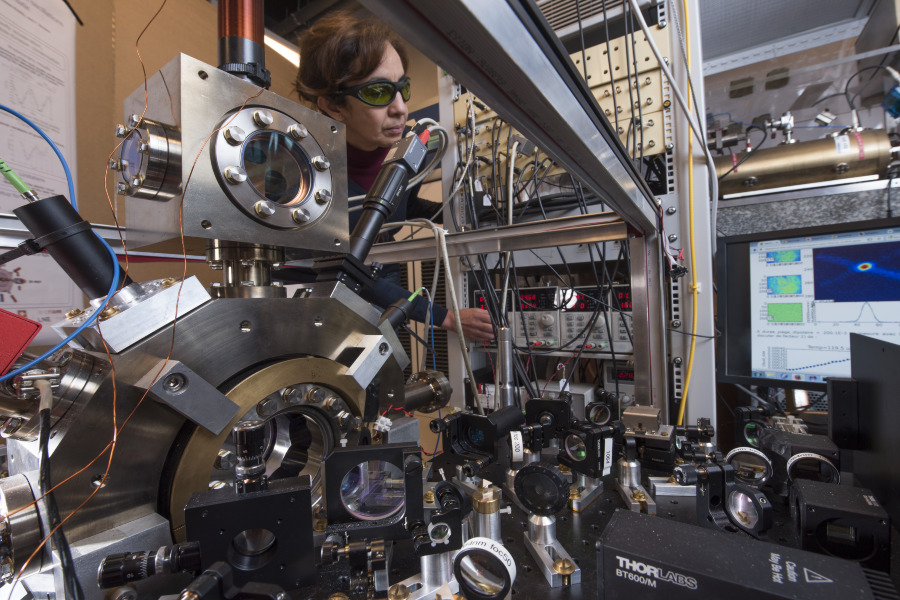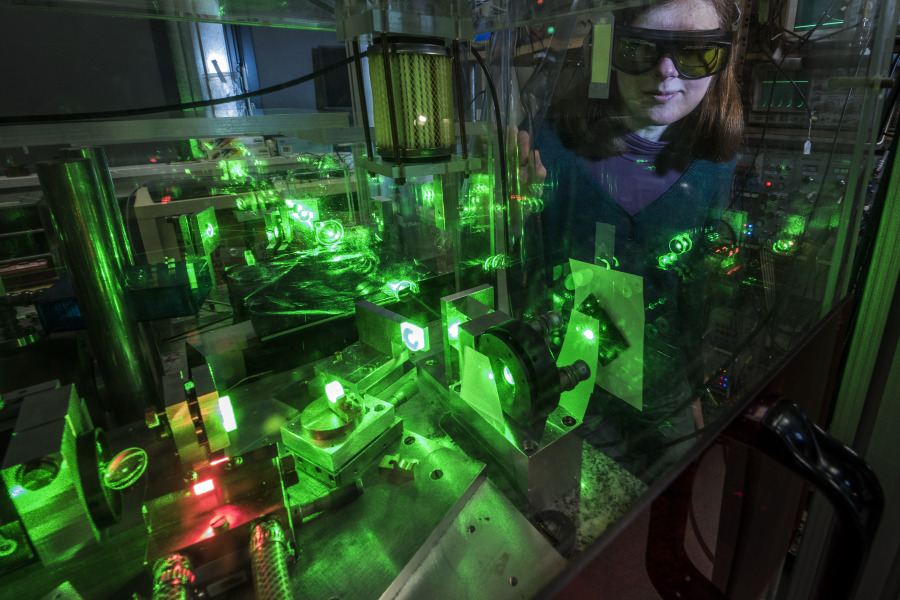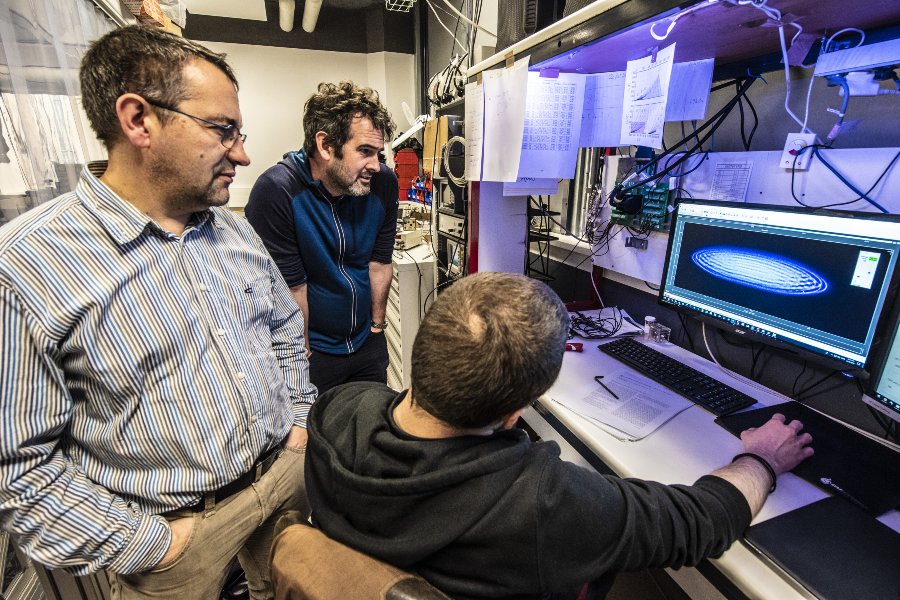Activities Time-Frequency:
Workforce: 34with: 17 permanents, 17 non-permanent
PARIS, France
The Kastler Brossel laboratory is one of the world leaders in the field of quantum physics, covering a large number of subjects ranging from fundamental tests to applications. His research activities cover different aspects, concepts and systems: ultracold quantum gases based on cold atoms or Bose Einstein condensates, quantum optics and quantum information, atoms and light in dense or complex media, tests of fundamental interactions and metrology.
Time-frequency activities naturally fall within the central research theme of the laboratory (study of the quantum behavior of atoms and of the electromagnetic field). These activities are present in several research groups either for the development of new tools and concepts, or for fundamental constant determinations, or to carry out fundamental tests of physics. Thus, experiments are conducted at the Kastler Brossel laboratory in order to:
- realize micro-clocks with cold atoms on chip in collaboration with the SYRTE laboratory,
- determine several fundamental constants and carry out amoung the best tests of quantum electrodynamics by high resolution spectroscopy of the hydrogen atom (Rydberg constant, charge radius of the proton), by measuring the recoil effect when a rubidium atom absorbs a photon (fine structure constant), and by high resolution spectroscopy of the molecular ion H2+ (electron to proton mass ratio),
- participate to the ACES/PHARAO clock mission in space in order to test the gravitational shift of clocks predicted by A. Einstein, to search for a temporal variation of the fundamental constants and to test new applications in geodesy and navigation using a clock with cold atoms in micro-gravity,
- participate to the VIRGO collaboration to detect gravitational waves and improve the sensitivity of future interferometers by studying the contribution of radiation pressure effects and new squeezed laser sources,
- study the entanglement of several objects in atomic assemblies to improve the accuracy of optical clocks in collaboration with the SYRTE laboratory.
Contribution to:
VIRGO collaboration
GBAR collaboration
CREMA collaboration
International collaborations:
Refimeve
VU Amsterdam
Mainz Universität
Paul Scherrer Institut
CERN

© Frédérique PLAS/LKB/CNRS Photothèque.

© Hubert RAGUET/LKB/CNRS Photothèque.

© Hubert RAGUET/LKB/CNRS Photothèque.

Crédit photo : Hubert RAGUET / LKB / FIRST-TF / CNRS Photothèque.

Crédit photo : Hubert RAGUET / LKB / FIRST-TF / CNRS Photothèque.
Expertise :
- Oscillators
- RF and microwave oscillators and synthesis
- MEMS technologies• Micro and nano-fabrications of optomechanical resonators
- Optical oscillators, lasers
- Lasers locked to a Fabry-Pérot cavity• Lock on high-finesse Fabry-Perot cavities
- Lasers locked to an atomic or molecular line• Laser diode stabilized on the 5S-5D Rubidium Rb two-photon transition at 778 nm
Iodine I2 stabilized visible lasers
Formic acid CH2O2 stabilized carbon dioxide CO2 IR lasers - Frequency combs• Menlo frequency comb user
- Laser sources• Cw laser at 205nm
Cw laser at 313 nm
Squeezed laser sources
Phase locked quantum cascade lasers
- RF and microwave oscillators and synthesis
- Atomic references
- Micro-wave clocks and subsystems
- Cold atoms• Trapped atom clock on a chipCold atom space clock
- Micro-wave clocks and subsystems
- Specific methods of time-frequency metrology
- Noise
- Phase noise, PLL• Phase noise control induced by an optical fiber and in a laser
- Intensity noise• Squeezing for low noise laser sources
- Short term stability, long term stability• Noise reduction below the quantum projection noise by spin squeezing
- Systematics, Accuracy, Calibration
- Systematics in atom-light interaction• Systematic effects of atoms Interactions and wavefront distortions in an atomic interferometer.
- High resolution spetroscopy
- Atomic spectroscopy• High resolution spectroscopy of the hydrogen atom
Spectroscopy of exotic atoms - Molecular spectroscopy• Spectroscopie de l'ion moléculaire H2+
- Atomic spectroscopy• High resolution spectroscopy of the hydrogen atom
- Noise
- Techniques for time-frequency metrology and applications
- Electronics
- Digital electronics• Lock-in, signal generators using Red-Pytaya modules
- Cooling or trapping techniques
- Cooling, trapping of atoms• Cold atoms transport in an optical lattice
Cold atoms in Hollow core fiber
Laser cooling and Trapping methods.
Evaporation, Bose-Einstein condensation, superfluidity - Trapped ions• Development of ion traps for high resolution spectroscopy and fundamental tests
Be+ laser cooling
- Cooling, trapping of atoms• Cold atoms transport in an optical lattice
- Interferometry techniques
- Atom interferometry techniques• Velocity sensor based on atom interferometry
Large momentum beam splitter
Velocity selective Two-photon transitions
Bloch oscillations - Optical interferometry techniques• Wavelength measurement using Fabry-Perot interferometer
- Atom interferometry techniques• Velocity sensor based on atom interferometry
- Sensors
- Atomic inertial sensors• Compact atomic gravimeter in an optical lattice
- Electronics
Connected Sectors:
- Fundamental science
- Fundamental metrology• Determination of fundamental constants of physics (Rydberg's constant, fine structure constant, ratio of the mass of the electron to that of the proton)
- Tests of fundamental physics• Tests of quantum electrodynamics
Search for fith force - Astronomy, astrophysics (radioastronomy, VLBI, gravitational waves sensors)• Member of the VIRGO collaboration
- Positioning and navigation
- Satellite positioning, GNSS• Gravity / relativity test
- Tracking probes in the Solar system• Gravity / relativity test
- Environment and health
- Geoscience (geodesy, geophysics)• Compact gravimeter
FIRST-TF Network
FIRST-TF Contact(s):